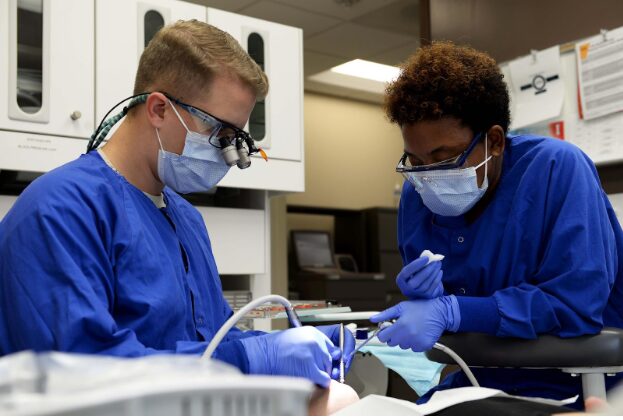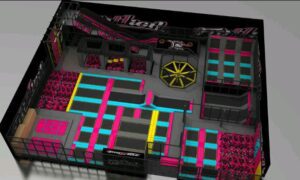Your car’s exterior takes a beating. Whether it’s a runaway shopping cart, hailstorm, or a careless driver in a crowded parking lot, dents happen. The good news is, not every dent requires a full-blown body shop repair or a new coat of paint. That’s where paintless dent repair (PDR) comes in.
If you’ve ever searched for a cost-effective, fast solution to cosmetic auto damage, you might have come across services like paintless dent repair Denver. But what exactly is paintless dent repair, and why has it become such a popular option for drivers and auto professionals alike?
A Modern Approach to Traditional Bodywork
Paintless dent repair is a specialized method used to remove minor dents and dings from a vehicle’s body without disturbing the original paint finish. It’s done by carefully massaging the metal back into shape using unique tools, lighting systems, and techniques. Unlike conventional repairs that often involve sanding, fillers, or repainting, PDR works with the existing surface, which helps preserve your vehicle’s factory paint and overall value.
Technicians access the damaged area from behind or around the dent, gently manipulating the metal panel until it looks like the damage was never there. There’s no sanding, no body filler, and no color matching, just your original finish, restored.
The Best Candidates for PDR
While it’s not the solution for every type of damage, paintless dent repair works well for:
- Hail damage
- Door dings
- Minor creases
- Small to medium-sized dents
- Damage where the paint hasn’t cracked or chipped
The method depends heavily on how accessible the dent is and the condition of the paint. If the metal isn’t stretched too far and the paint remains intact, there’s a good chance PDR is an option.
However, deeper dents, punctures, or areas with paint damage might still need conventional repair. It’s always a good idea to have a qualified technician evaluate the damage before making a decision.
Advantages That Go Beyond Cosmetic
There’s a reason insurance companies and auto dealers favor PDR: it’s efficient, cost-effective, and retains the vehicle’s original condition. Here are some of the top benefits:
- It’s faster.
Most paintless dent repairs can be completed in just a few hours, sometimes even while you wait. No drying time or multiple-day shop visits. - It’s cheaper.
Because there’s no need for materials like paint or filler, and labor is often minimal, costs are significantly lower than traditional methods. - It maintains resale value.
Keeping the original paint intact helps preserve the car’s factory finish, which is critical when you’re planning to resell or trade in. - It’s eco-friendly.
Without chemicals, paints, or solvents, paintless dent repair has a smaller environmental footprint.
The Tools Behind the Technique
PDR might look simple to the untrained eye, but it’s a refined process requiring precision and skill. The tools involved include:
- Metal rods and picks: Used to access and push out dents from the inside.
- Glue pullers: Useful when the backside of the panel isn’t accessible.
- Special lighting: Helps technicians see the dent clearly, even the smallest imperfections.
- Tap-down tools: Used to flatten high spots and refine the surface.
Getting it right means reading the metal, understanding tension points, and knowing when to push and when to leave it alone. That’s why experience matters. A trained PDR specialist can make the difference between a flawless repair and one that leaves a ripple or shadow behind.
PDR and Hail Damage: A Perfect Match
In regions where hailstorms are common, paintless dent repair has become the go-to solution. Hail damage typically results in multiple small dents on the roof, hood, and trunk which are precisely the kind of uniform, shallow dents PDR is perfect for.
According to this report from the Insurance Information Institute, hail causes billions in damages to vehicles every year in the U.S., making fast and efficient repair methods more important than ever. PDR allows vehicle owners to address widespread damage quickly, often covered by comprehensive auto insurance.
When PDR Might Not Work
It’s not a silver bullet. There are some cases where paintless dent repair just isn’t feasible. For example:
- If the dent is on a sharp edge or body line, the metal may be too rigid to reshape.
- If the paint is cracked or missing, pushing the dent out won’t restore the surface finish.
- If the dent is very deep, the metal might be overstretched and unable to return to its original form.
- Plastic bumpers or panels made of materials other than metal or aluminum aren’t good candidates.
Still, PDR specialists have been able to work minor miracles with damage that might seem too far gone. It all depends on their experience and the specific damage.
Mobile Repairs: Convenience at Your Doorstep
Another growing trend in paintless dent repair is mobile service. Many companies now offer on-site repairs, whether at your home or office. This saves time and lets you get your car back into shape without adjusting your schedule. It’s an especially helpful option for smaller dings that don’t require a shop setting.
Choosing the Right Technician
Not all PDR technicians are created equal. Since this method relies so heavily on skill and feel, it’s important to find someone with training, certifications, and solid reviews. Look for:
- Experience with your specific make and model
- A portfolio or photo gallery of before-and-after work
- Clear explanations of what can and can’t be fixed
- Fair pricing and a satisfaction guarantee
Also, beware of “too good to be true” pricing from pop-up or door-to-door dent repair services. The tools might be easy to buy, but that doesn’t mean the results will be professional.
Final Thoughts
Paintless dent repair is one of those automotive innovations that just makes sense. It saves time, saves money, and helps keep your car looking the way it did before that unexpected dent showed up. Whether it’s from hail, a stray cart, or a moment of inattention, PDR offers a solution that’s simple, fast, and effective.
So if you’re staring at a fresh dent in your otherwise pristine hood, it might be worth getting a second opinion before heading to the body shop. You could be a few hours, and just a few hundred dollars, away from a fix that leaves no trace behind.



































